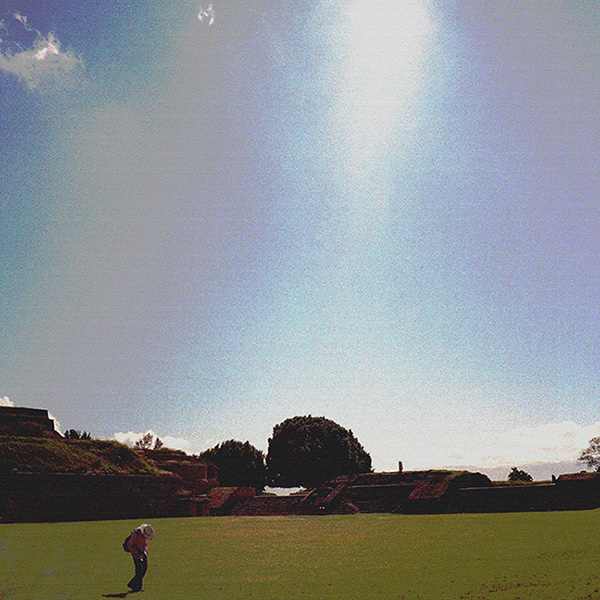Steganograms
FOR IMMEDIATE RELEASE
Steganograms
Julien Bismuth
September 19 - October 31, 2015
Opening reception: Saturday, September 19, 6-9 PM
Performance: Saturday, September 12, 5 PM
The title of the show is Steganograms. It's a nice segueway from the title of my last show at Emanuel's, which was Stenograms. Steganography is the art of encrypting a text into an image. Stenography is another name for shorthand. I encountered the word steganography while researching stenography on the web, and I coined the word steganogram from it. Even search engines can lead you down garden paths.
And these are the works for the show:
1. The Steganograms:
Each work consists of an image that has been encrypted with a text by means of digital steganography. The texts are encrypted into the images using software designed by my cousin Vincent Bismuth. His program allows me to make the encryption more or less visible, by altering more or less of the data of the image. Altering the data alters the colors of the pixels of the image. And that's really what I like most about the whole thing. Coloring an image with a text, transcoding a text as shifts in color of the mosaic pieces of an image.
Along with the encrypted image, both a copy of the text and a print of the original unaltered photograph will also be exhibited, so that all elements of the work are on display. The encrypted image will be shown on a vertical surface, like a wall, and the text and original photograph will be shown on a horizontal surface, in this case a vitrine. We're making framed prints of all the encrypted images, but I'm also open to printing them in other sizes and on other surfaces.
2. Untitled (Fill):
This is the work that I will perform on September 12th. I will write a text in front of an audience, while simultaneously filming and projecting an image of the piece of paper on which I'm writing. The work aims to produce an image of writing. It shows a text building up to its conclusion, which comes about when I reach the end of the page.
3. Titular works:
These pieces consist of a title. The title sometimes dictates or describes something outside of itself. So, for example, one of them is just the verb "replace," and the way you install is by replacing something in the gallery (a broken light bulb for instance) with something else (a new bulb). Another consists of two words separated by a comma: "place, displace." That's a descriptive rather than a prescriptive work. It describes the movement of things being placed and displaced in the gallery. Yet another is just a punctuation mark, a colon, that gets replicated somewhere else in the gallery as a set of two contiguous holes. One of the titles is just a phrase I overheard on the street in New York. And there will also be a series of dimensions that will be installed in the space as gaps or vacancies on its walls. I keep wanting to fill these vacancies with something else: a title, a reference, an allusion. But I think I'll try and leave them vacant for as long as I can.
4. Gödel:
What else? There's a video I want to include of Cheryl and John Dawson, who compiled and edited the complete works of Kurt Gödel. They're shown translating a section from one of Gödel's philosophical notebooks, which he wrote in shorthand. It's a passage about time, and the process of translating it takes a little over 13 minutes. They lose track of the text as they're deciphering it, and so they have to work back to the beginning, start again... time is thus both the topic and the protagonist of the video. I'll include excerpts from my correspondence with the Dawsons that provide a nice introduction to the passage in question, and to Gödel's notebooks as a whole. I became interested in Gödel after reading about the philosophical fragments contained in his private notebooks. Gödel was obsessed with trying to determine the aspects of human thought that could not be replicated by an algorithm, in other words with formulating a reply or response to Turing's machine, without which I could not have made any of the works in the exhibition, at least not in the same way.
5. Helena Valero:
And maybe some collages as well. And also a sound piece, a recording of a woman singing. I titled the work after her. If you look her up, and read the book that tells her life story, you will understand the significance of her voice, her singing voice.
So that's about it.
The show circles around images, words, and numbers. How we communicate differently in all three mediums, especially now that almost everything can be reduced to a line of numerical code. There's a lot more to be said about all of this, but I don't want this text to be too long, so I'll end it here.
-Julien Bismuth
